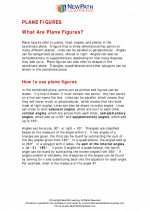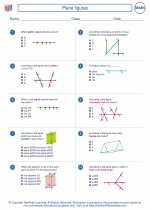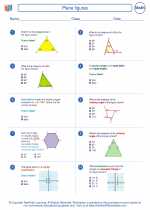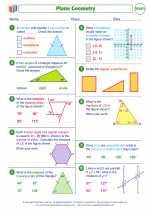Vertex in Mathematics
In mathematics, the term "vertex" has different meanings depending on the context. One common usage of the term is in the study of geometric shapes and functions, particularly in the field of algebra and geometry.
Vertex in Geometry
In the context of geometry, a vertex refers to a point where two or more line segments, lines, or rays meet to form an angle. For example, in a triangle, each of the three corners where the sides meet is considered a vertex. In a polygon, each point where the sides meet is also a vertex.
Here's an example of how to identify and label vertices in a triangle:
 Triangle with labeled vertices">
Triangle with labeled vertices">
Vertex in Algebra
When it comes to algebra and functions, the term "vertex" is commonly used in the context of quadratic functions. A quadratic function is a type of function that can be written in the form y = ax^2 + bx + c, where a, b, and c are constants and x is the variable.
The vertex of a quadratic function is the point on the graph where the function reaches its maximum or minimum value. This point is also known as the "turning point" of the graph.
Here's how to find the vertex of a quadratic function in the form y = ax^2 + bx + c:
- First, calculate the x-coordinate of the vertex using the formula x = -b/(2a).
- Next, substitute the x-coordinate into the original function to find the corresponding y-coordinate.
For example, consider the quadratic function y = 2x^2 - 4x + 3. The x-coordinate of the vertex can be found using the formula x = -(-4)/(2*2) = 1. Substituting x = 1 into the function yields y = 2(1)^2 - 4(1) + 3 = 1. Therefore, the vertex of the function is at the point (1, 1).
Study Guide for Vertex
Here are some key points to remember about vertices in mathematics:
- In geometry, a vertex is a point where line segments, lines, or rays meet to form an angle.
- In algebra, the vertex of a quadratic function is the point on the graph where the function reaches its maximum or minimum value.
- The x-coordinate of the vertex of a quadratic function can be found using the formula x = -b/(2a).
- Once the x-coordinate is found, the y-coordinate can be determined by substituting the x-value into the original function.
Understanding vertices is important in various mathematical contexts, including geometry, algebra, and calculus.
Remember, practice is key to mastering the concept of vertices. Try solving different problems and exercises related to vertices to strengthen your understanding.
.◂Math Worksheets and Study Guides Eighth Grade. Plane figures

 Worksheet/Answer key
Worksheet/Answer key
 Worksheet/Answer key
Worksheet/Answer key
 Worksheet/Answer key
Worksheet/Answer key
 Worksheet/Answer key
Worksheet/Answer key
